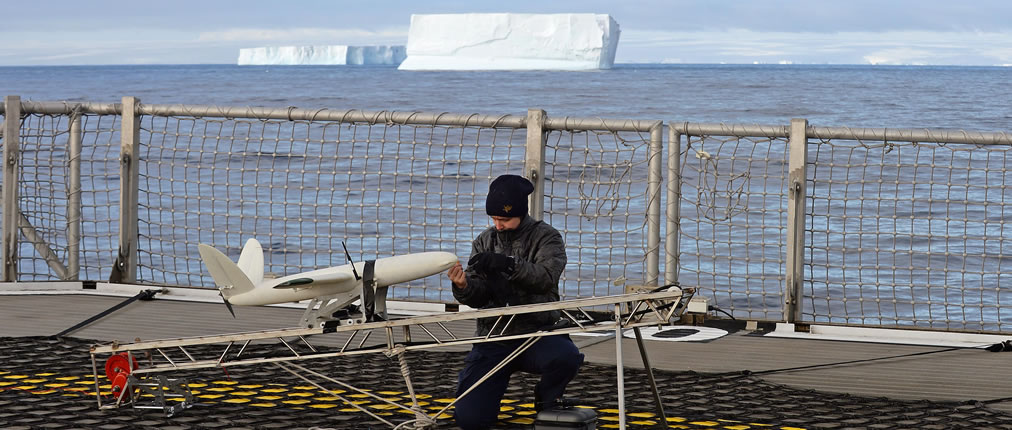A tiny pilotless aircraft built by researchers at Southampton has launched from the Royal Navy’s ice patrol ship HMS Protector for the first time, to assist with navigating through the Antarctic.
The 3-D printed aircraft left the HMS Protector in April, scouting the way for the survey ship so it could find its way through frozen seas. Known as SULSA (Southampton University Laser-Sintered Aircraft), the aircraft is made of nylon and assembled without the use of any tools.
The collaboration between the University and the Navy was initiated after alumnus Sir George Zambellas (Aeronautics, 1980) visited the University’s engineering department in March 2014 to learn about the research being conducted here. Sir George was First Sea Lord of the Royal Navy at the time of his visit in 2014, and wanted to link with the University’s expertise to advance technology being used in the Navy.
The craft is controlled from a laptop and can cruise at nearly 60mph, providing the icebreaker ship with real-time, high-quality information and pictures of the surrounding environment from a perspective only available from the air.
Andy Keane, Professor of Computational Engineering at the University, said:
The series of flights conducted by Southampton staff in conjunction with the Royal Navy from HMS Protector has been a great success. These flights have shown just what can be achieved with smart design and low cost digital manufacture.
Sir George said: “Radical advances in capability often start with small steps. The launch of a 3D-printed aircraft is a small glimpse into the innovation and forward thinking that is now embedded in our Navy’s approach.”



